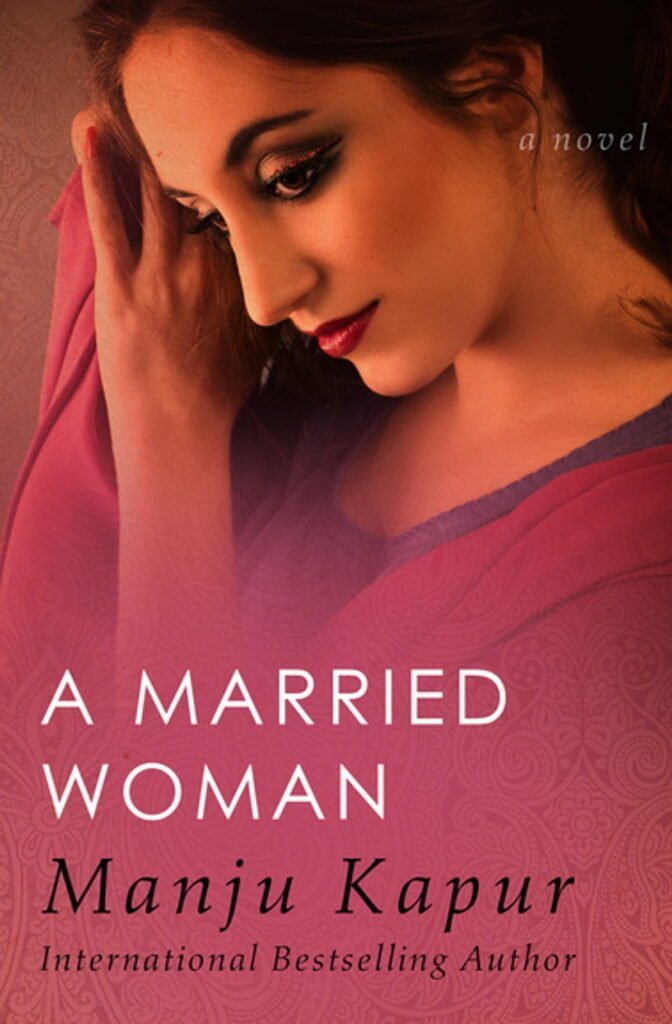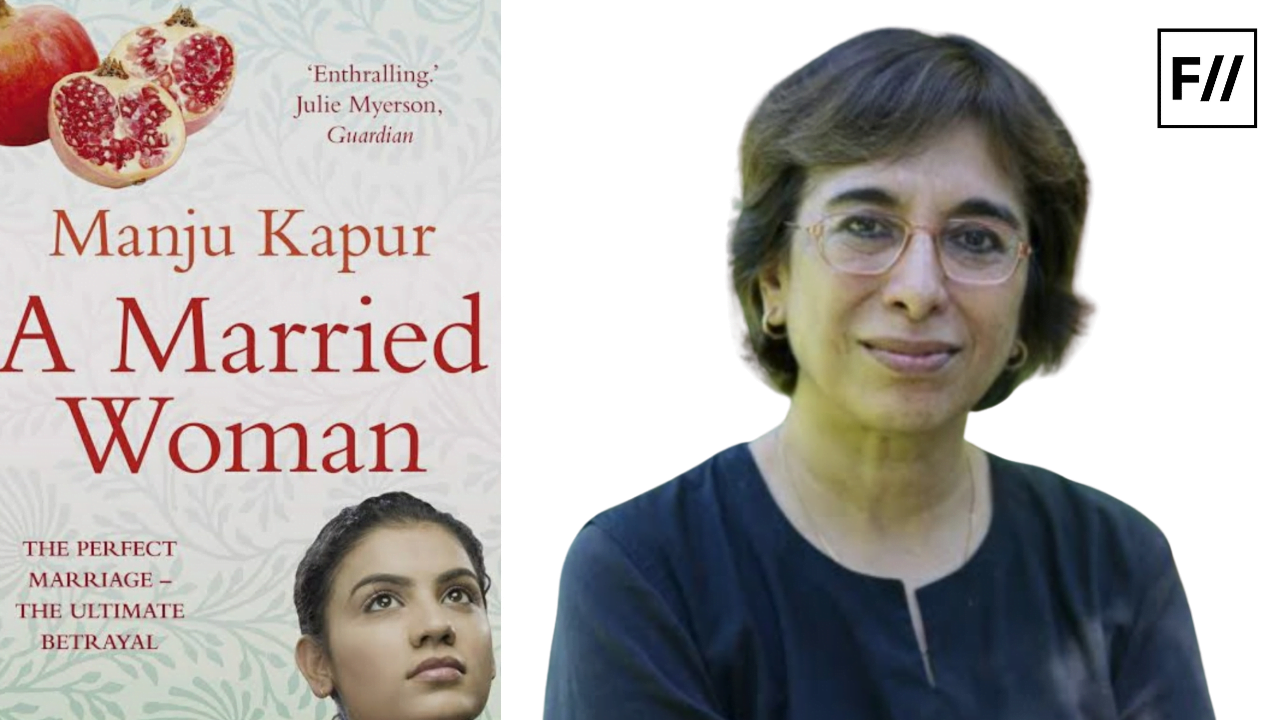Manju Kapur’s 2003 published novel, A Married Woman is set in 1992, the year the Hindutva zealots demolished the Babri Masjid in Ayodhya. It also realistically depicts the stoic existence of a married woman amid communal strife in India over the land of Ayodhya.
With the protagonist Astha, the novel talks about the different phases in the life of a woman, pre and post marriage. The novel calls into question the fundamental ideals of the institution of marriage and depicts the terrible realities of a homosexual relationship in India against a backdrop of communal conflicts through the journey of a married woman.
In her debut work, Difficult Daughters, she presented the story of an arrogant young lady who falls in love with a guy who is not only her instructor but also married, set in pre-independence India. A Married Woman, on the other hand, discusses the many stages of a woman’s life, both before and after marriage.
Manju Kapur is one of the most successful Indian women authors in English. Her amazing works have enhanced the Indian English fictional realm. Her compositions, with a delicate appeal, portray the true challenges in the lives of Indian women. She is a feminist writer who speaks out against women’s plight in a patriarchal culture where social, cultural, and political factors stand in the way of a new woman.

Her work, A Married Woman, explores the inner anguish of a new woman who experiences many changes in her life after marriage but ultimately strives for her basic rights of equality, identity, and self-satisfaction. Kapur’s characters are typically educated which shows that they are aware of their surroundings. In her debut work, Difficult Daughters, she presented the story of an arrogant young lady who falls in love with a guy who is not only her instructor but also married, set in pre-independence India. A Married Woman, on the other hand, discusses the many stages of a woman’s life, both before and after marriage.
Also read: Book Review: Cinnamon Gardens By Shyam Selvadurai
The plot of ‘Married Woman’ is set in the 1970s and 1980s and focuses on Astha, a gifted painter and the only daughter of a prominent bureaucrat and a teacher by profession.
Aijaz in the novel is a street play artist who invites her to write the script for a play about the Babri Masjid controversy. And this is the first time Astha meets a man who recognizes her skill and is so drawn to him. Aijaz is brutally killed while presenting a play about the Babri Masjid-Ram Janambhoomi controversy. This part depicts communal violence and how it has affected the lead character’s life in many ways.
Astha’s life has always been dominated by her mother, who has always pushed her decisions on her daughter. As a normal mother, she devotes her entire efforts to shaping Astha into an ideal wife, daughter-in-law, and mother. These are all said in the initial pages giving a brief about her pre-marital life. After two brief encounters, Astha marries Hemant, an MBA from the United States, with their parents arranging everything.
Also read: Book Review: You, Me And Every Woman In ‘Lies Our Mothers Told Us’
Talking about the position of women in the traditional society with a story plot in the 70s through a married woman as the protagonist, Kapur’s writing has a tone which says she is aware of hurdles the women in the early era went through, where they are simply subservient and obedient, and this constant state of their lives becomes the source of their psychiatric and neurotic problems. They never say anything negative about the male-domination.
These women are regarded as ideal Indian wives. However, in the present period, a woman opposes the old social structure of society. She rebels against oppressive rules and traditions, rejecting the ideal image of the woman.

The narrative of the book is of a married woman’s journey where despite having all a woman could want from her marriage like a responsible husband, kind in-laws, and two children, Astha nevertheless feels incomplete as a person. Her spouse constantly dismisses her thoughts and opinions, and her needs as a person are often trampled by her commitments to her family.
But later in the story, when Aijaz arrives at the school where she teaches, her life changes. Aijaz in the novel is a street play artist who invites her to write the script for a play about the Babri Masjid controversy. And this is the first time Astha meets a man who recognizes her skill and is so drawn to him. Aijaz is brutally killed while presenting a play about the Babri Masjid-Ram Janambhoomi controversy. This part depicts communal violence and how it has affected the lead character’s life in many ways.
Manju Kapoor’s wonderful portrayal of Astha and Peeplika’s love is the heart of the novel. The reasons why both ladies need each other, as well as their initial hesitation, have been thoroughly explored without any inhibitions by the author. With different topics put forward, the story towards the end takes a different take as the two characters take two different paths of lives.
When Aastha begins to paint, the novel moves from one dull page to the next as her life progresses from one gloomy day to the next. The Babri Masjid incident is essential to the storyline because it shows how society is divided by religious divisions and the dynamics of power politics. Looking at this as a metaphor, same like this, their dynamic, her marriage also falls apart due to the irreconcilable disagreements. This is the point at which Astha completely commits to the cause, much against the desires of her family.

Later in the novel, when she becomes involved in communal protests and meets Pipeelika Khan, a Muslim widow. They both fall in love with one another, and the author has written openly about their intense love affair. The author has established a comparison between Hindu-Muslim sectarian tension in India and Astha and Pipeelika’s sexual tension. Peeplika, a much younger lady who is a social activist, begins a romance that defies all expectations that society and the family have imposed on her.
Also read: Book Review: Why I Am Not A Hindu Woman By Wandana Sonalkar
Despite her outstanding education and intellectual level, a woman has no place in a family or community, and her opinion or views are not valued. She gets frustrated and eventually decides to pursue her aim for happiness or fulfillment. Witnessing her marriage that is falling apart due to intrinsic disagreements, she abandons her marital life and falls for Pipeelika without any inhibitions. This is the distinguishing feature of a woman who is willing to incur any risk to achieve equality with males in society. Her opinions may appear unusual to some, but they are the inner voice of a new woman determined to live her life to the fullest, which is depicted by the author throughout the novel.
Manju Kapoor’s wonderful portrayal of Astha and Peeplika’s love is the heart of the novel. The reasons why both ladies need each other, as well as their initial hesitation, have been thoroughly explored without any inhibitions by the author. With different topics put forward, the story towards the end takes a different take as the two characters take two different paths of lives.
Looking closer, deeply understanding and not revealing the whole journey of Aastha it can be said that, overall, here in the novel, female gender and sexual identity are inextricably linked to national identity, making it an intriguing reading piece. To understand better the different shades of her life story and to learn more about many things about women’s lives, an institution of marriage, this is a must read.




